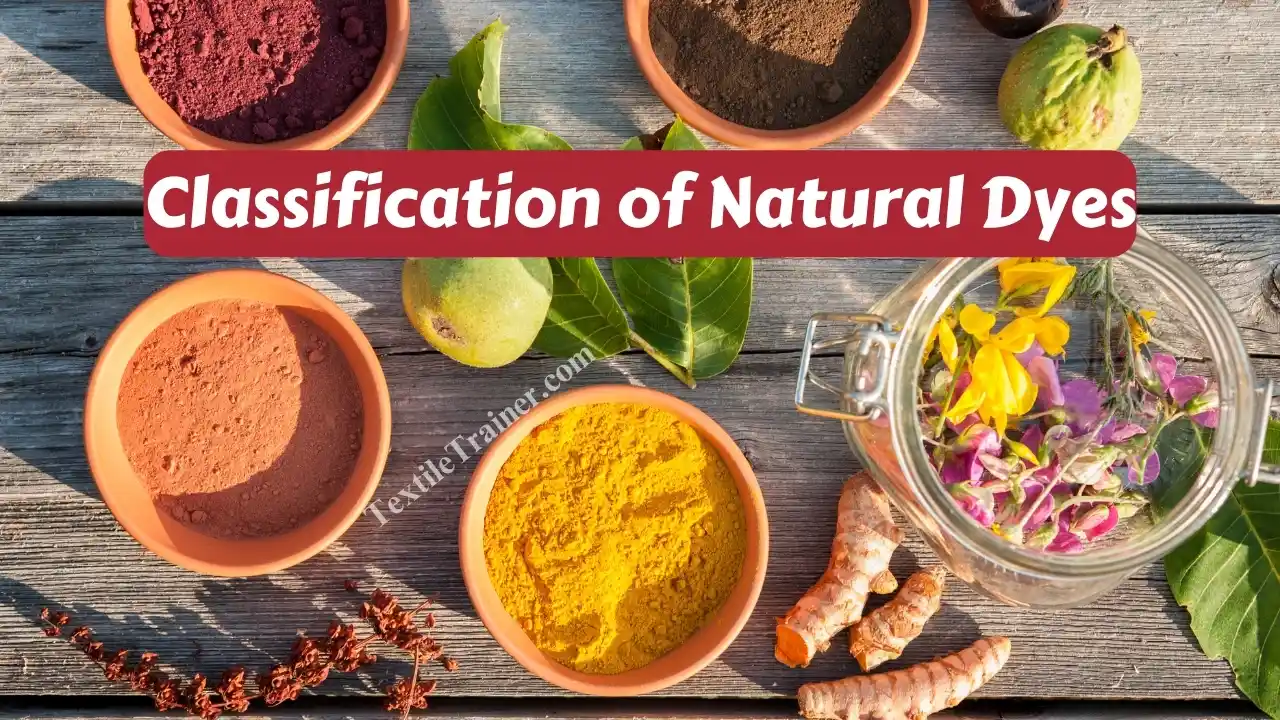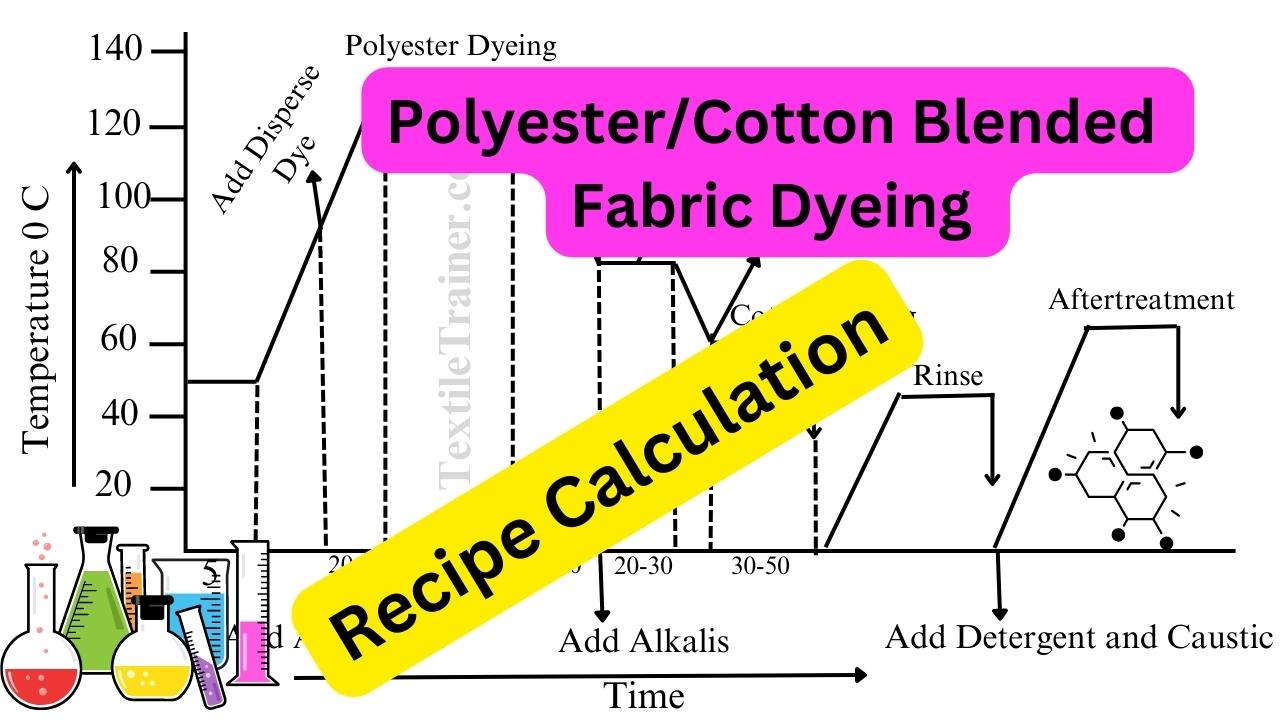Classification of Mordant and Mordanting Method of Natural Dye
What is Mordant?
A mordant is a dye-fixing agent that is used to set dyes on fabric, particularly in the case of natural dyes. Many natural dyes do not have an affinity for textile fibres (especially cellulosic fibres). Mordants don’t only increase dye affinity but also improves colourfastness properties. Mordant also produce different color from same natural dyes. The goal of this article to brief classification of mordant and methoding process for natural dye.
You May Read:
- Natural Dye Extraction Process: 7 Easy Technique
- Fabric Dyeing with Beetroot: 4 Easy Step with Image
Classification of Mordant
It is necessary to use mordants as natural dyes have limited color yield. Natural dyes also have poor fastness properties. Different types of mordants produce different yields even for the same natural dye. In natural dyes, the mordant is an essential substance. Three kinds of mordants exist:
- Metallic mordant.
- Tannin
- Oil mordant
1. Metallic Mordant:
Metallic mordant can be classified into two categories.
- Brightening Mordant:
- Alum: The most common type of alum used for mordant is potash alum, which is cheap and easy to obtain. Potash alum produces pale versions of dye colors commonly found in plants.
- Chrome (potassium dichromate): It is also referred to as red chromate. Although it is generally more expensive, Cr3+ or Cr6+ is considered to be an objectionable heavy metal if it is present beyond a certain level. Based on the norms of the eco-standards, its use has been limited. As a light-sensitive substance, dichromate solution changes color when exposed to light.
- Tin (stannous chloride): Compared to other mordants, Stannous chloride provides brighter colors, but they oxidizes when exposed to air and give fabrics a stiffer hand. It also causes a higher loss of tensile strength if applied beyond a certain concentration.
- Dulling mordant:
- Copper (cupric sulfate): It gives some special effects in shades that would otherwise not be possible. However, copper beyond a certain limit also falls under the eco-standard norms as an objectionable heavy metal.
- Iron (ferrous sulphate): It is readily available and one of the oldest mordants known. It is extensively used to get grey to black shades. It is easily available and readily soluble in water.
You May Read:
- 4 Authentic Sources of Natural Dyes is Describe Easy Way
- Latest Classification of Natural Dyes in 3 Way
2. Tannin:
Because cotton and cellulosic fibers lack affinity for metallic mordants, tannic acid or tannins are used as primary mordants for cotton fabric. A cotton fabric treated with tannic acid can absorb all metallic mordants. Some vegetables, like myrobolan, oak galls, sumac, and pomegranate rind, contain tannin acid. We can do the mordanting process by using these types of vegetables. Myrobalan contains ellagitannin tannins that are excreted in the plant’s bark, leaves, fruits, and galls.
These tannins are cheaper and produce a yellowish color in textile materials. These types of mordant make black shades on cotton. It is also widely used. In sumac, leaves and twigs contain 15 to 20% tannin, which is of the Gallo tannin type and has an olive-green color. Some reddish coloring matter prevents sumac from being used for light and brilliant shades.

3. Oil Mordant:
Vegetable oils or Turkish red oil (TRO) are used as mordants. These types of mordant are mainly used to dye madder into deep red colors. As an oil mordant, TRO forms a complex with alum when used as a main mordant. Natural oils do not possess the same binding capacity as sulfonated oils. Its fastness and hue are better than any other oil mordant.
However, these are the classification of mordant which is use for natural dyeing process.
Mordanting Method:
Fabric are need to subjected to an extra process due to the lack of affinity to natural dyes. These extra process is known a mordanting. There are three types of mordanting method. They are:
- Pre- mordanting method.
- Simultaneous mordanting method or Meta mordanting method.
- Post mordanting method.
1. Pre-mordanting Method:
Pre-mordanting is a process in which mordants are applied to fabric before dyeing. This process is most commonly used in cellulosic fiber. For this method, the fabric is first immersed in a mordant solution for 30 to 60 minutes at room or higher temperature. The liquid ratio of this method is 1:5 to 1:20. Then, the fabric is dyed with natural dyes. The pre-mordanting method has some advantages. They are:
- Processes can be made more economical by reusing baths.
- Pollution of environment are reduced.
- Large-scale applications are possible.
2. Simultaneous Mordanting:
During meta-mordanting or simultaneous mordanting, dyeing and mordanting are carried out simultaneously in the same bath. In other words, this method carries dyeing and mordanting simultaneously. This method has some advantages. They are:
- It reduced the dyeing time as dyeing and mordanting is carried out same time in same bath
- It is suitable for darker shades.
- This process is suitable for small lots.
3. Post Mordanting:
Post-mordanting is a process in which fabrics are treated with mordant after dyeing. The final color is developed in the last phase of the process. It is very common to apply iron salts in this manner. By this method, grey and black colors are produced on fabrics.
Reference:
- Miah, M. R., Zakaria, Hossain, M. A., Dipto, A. I., Telegin, F. Y., & Quan, H. (2016). Eco-dyeing of Nylon Fabric Using Natural Dyes Extracted from Onion Outer Shells: Assessment of the Effect of Different Mordant on Color and Fastness Properties. International Journal of Scientific & Engineering Research, 7(9), 1030–1043. http://www.ijser.org
- Pizzicato, B., Pacifico, S., Cayuela, D., Mijas, G., & Riba-Moliner, M. (2023). Advancements in Sustainable Natural Dyes for Textile Applications: A Review. Molecules, 28(16), 5954. https://doi.org/10.3390/molecules28165954
- Raja, S. S. and A. S. M. (2014). Natural Dyes: Sources, Chemistry, Application and Sustainability Issues. Textile Science and Clothing Technology, 37–80. https://doi.org/0.1007/978-981-287-065-0_2
- Salauddin Sk, M., Mia, R., Haque, M. A., & Shamim, A. M. (2021). Review on Extraction and Application of Natural Dyes. Textile & Leather Review, 6257(June), 1–16. https://doi.org/10.31881/TLR.2021.09
- Tamilarasi, A. (2021). Classification and Types of Natural Dyes: a Brief Review. International Journal of Creative Research Thoughts, 9(11), 527–532. www.ijcrt.org



